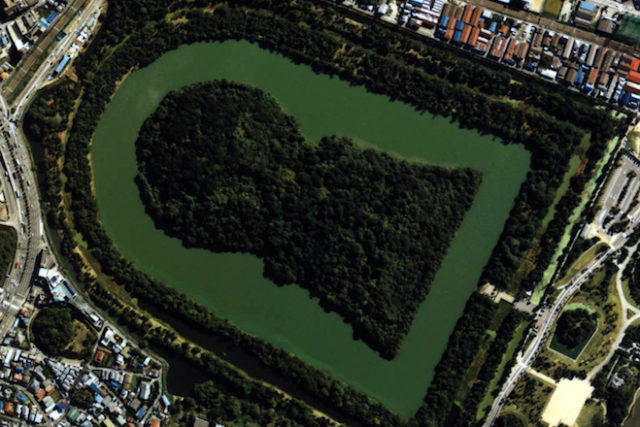RECENTLY, we have been armchair- traveling back in time to examine the origins of the Japanese people. We last left off with the Yayoi, the Korean rice farmers who settled northern Kyushu from 300 B.C. (Apr. 20). Their descendants built the kofun—huge burial mounds—across southern Japan. But where, exactly, did the Yayoi come from in Korea?
In retracing this ancient history, the problem that one encounters is the increasing vagueness of surviving written records backwards in time. History blends into myth, as it does in ancient Japanese compilations such as the Kojiki (AD 712) and Nihon shoki (AD 720).
To push the envelope here, it is necessary to pick up the story in Korea, where as in China, written history precedes that in Japan. There, many records point to Baekje as a key source for early immigrants to Japan.
What is known about Baekje today?
The Baekjeans are remembered primarily as a seafaring people. They were the “Phoenicians of Asia.” It was through their ships that Chinese writing and Buddhism reached Japan.
Before the ships carried calligraphers and monks, however, they carried the rice farmers. Many later ones were undoubtedly fleeing warfare, and the impending fall of their kingdom. In the fifth century, the armies of Goguryeo forced Baekje to move its capital southward twice. In the seventh century, Baekje declined further under the onslaught of the armies of Silla and Tang-Dynasty China, with whom Silla was allied. With the fall of Baekje in AD 660, Silla would eventually unify Korea. Accordingly, present-day Koreans largely descend from there.
The immigrants from Baekje were undoubtedly lured to Japan by glowing reports of the land there, which was more conducive to rice agriculture. Rice had spread north to Korea from its first domestication in the Yangtze Rivervalley of southern China.
Potential immigrants undoubtedly faced the universal “push and pull” decision-making of all immigrants described by Bill Hosokawa in “Nisei, the Quiet Americans” (1969; translated to Japanese in 1971). Should we stay? Or should we go?
Tipping the balance in favor of going must have been the spirit of adventure, the opportunity to try something new. Accordingly, my guess would be that most of the immigrants were young, like the Japanese-American Issei of a century ago.
On arrival, however, the new Korean- Japanese immigrants would not find life on new land easy. For the farms had to be defended from others who wanted the land. Accordingly, early settlements were enclosed by defensive ditches, moats, and berms.
Some of the enemies were the Emishi, the ancestors of the present-day Hokkaido Ainu, who were gradually driven back (north and east) by the arrival of the newcomers. The stone- tipped weapons of the natives could not match the metal-tipped and metal ones of the new arrivals. The new settlers also fought among themselves.
The resettlement of southern Korean peoples in Japan appears to have continued for centuries. Arrivals also came from Gaya, a declining kingdom adjacent to Baekje that fell in AD 562.
Moreover, connections between the ancestral home peninsula and the new country were long maintained. Inscriptions on gifted ancient swords in Japan bear the names of Baekje kings. One example is the famous Seven- Branched Sword (shichishitou, AD 369) of Isonokami Shrine, Nara prefecture. Inscribed “to the King of Wa [Japan],” it is one of the national treasures of Japan.
It is interesting to think about how the Japanese population during the Yayoi and later periods must have been like that of Nikkei in the U.S. now. For centuries, individuals represented a cross-section of new immigrants, of immigrant families who had been in the new land for multiple generations, and of blended families (immigrants and earlier arrivals).









